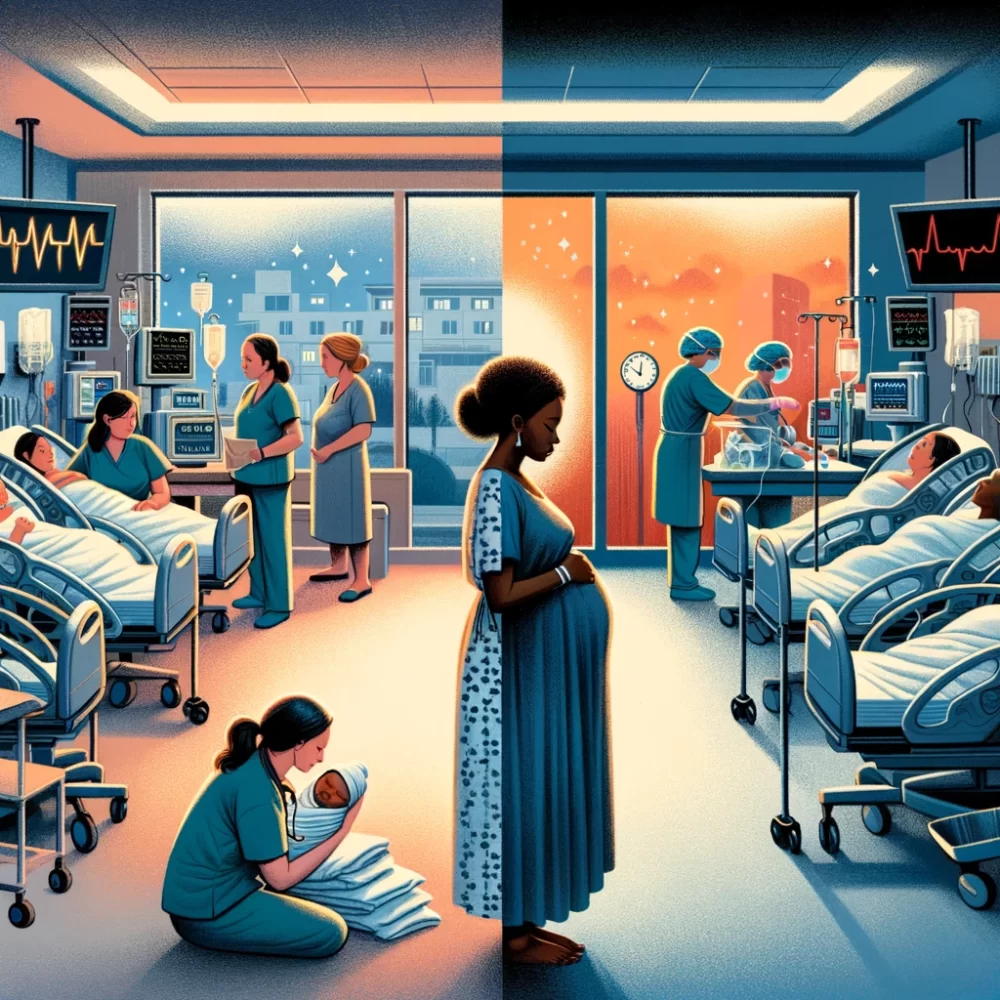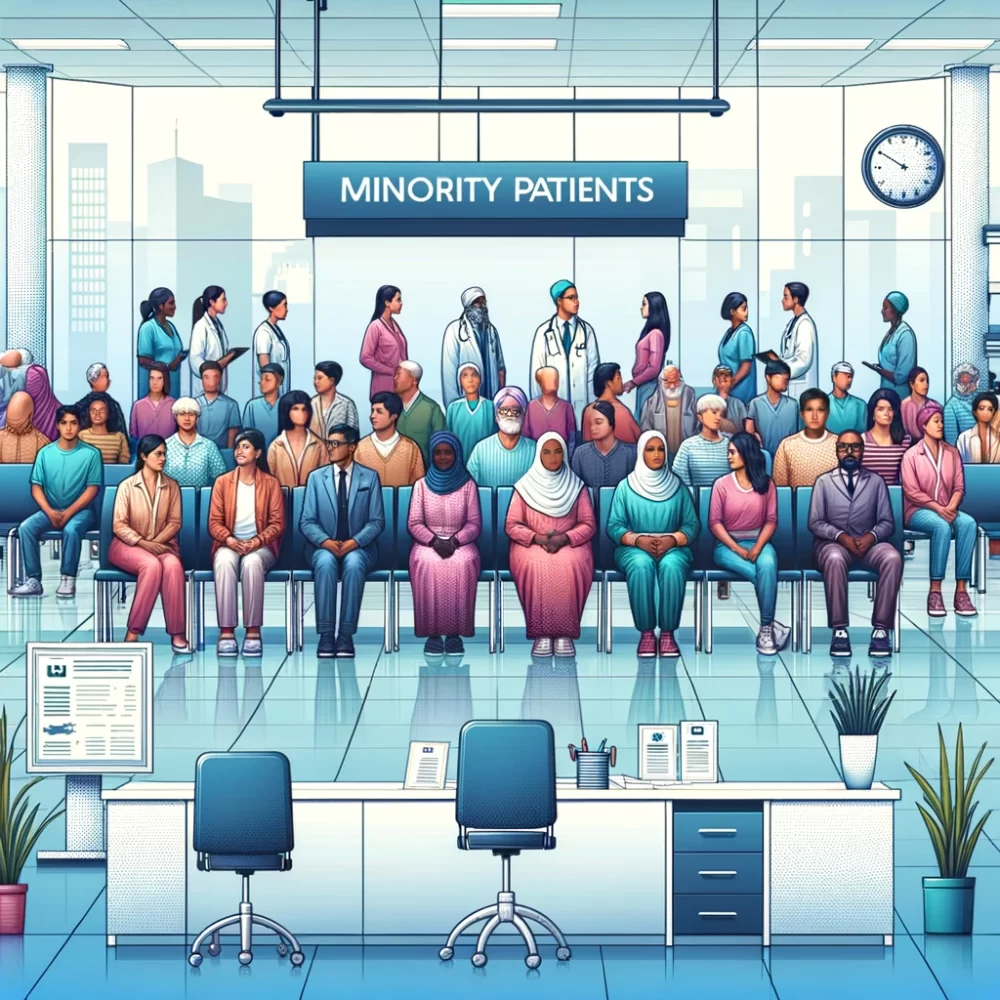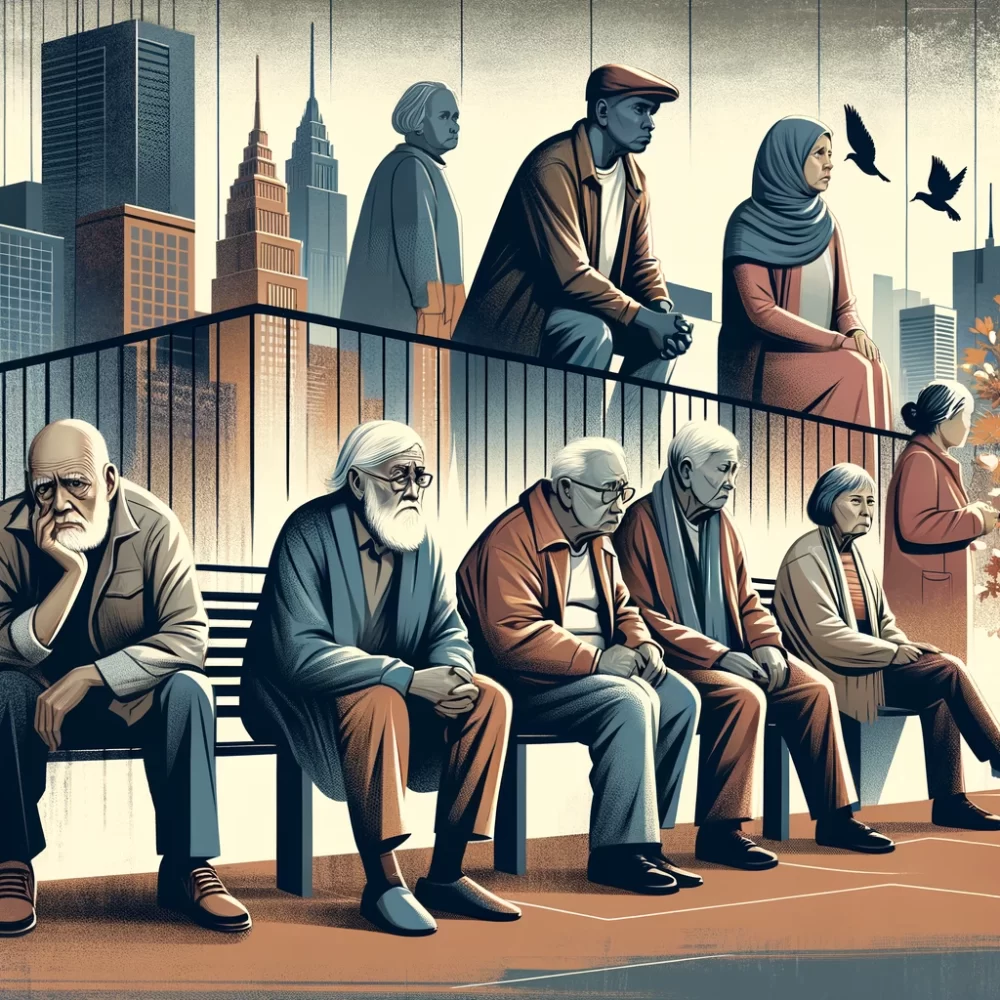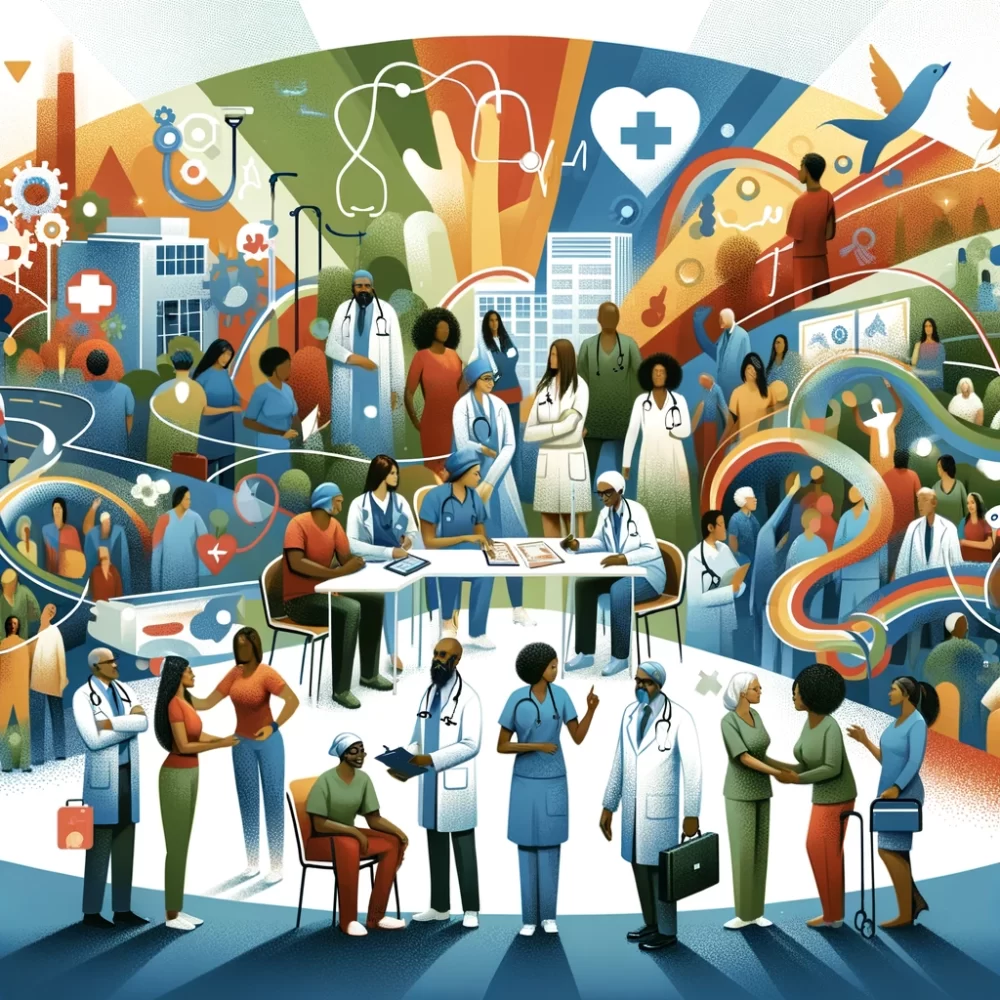
DALL-E
In today’s society, despite advances in medical technology and healthcare services, racial disparities in healthcare continue to be a pervasive and troubling issue. These inequities manifest in various forms, from access to care and treatment outcomes to representation in clinical research.
The consequences of these disparities are far-reaching, affecting the quality of life and longevity of minority populations. Addressing these issues requires a deep understanding of their root causes and a commitment to implementing comprehensive solutions. This article explores 14 alarming ways racial disparities persist in healthcare, shedding light on a critical issue that demands immediate attention and action.
1. Access to Care

DALL-E
Inequities in healthcare access are stark, with minority groups often facing significant barriers. Many individuals in these communities live in medical deserts, where clinics and hospitals are scarce. Economic factors, such as lack of insurance or underinsurance, disproportionately affect people of color, limiting their access to necessary treatments.
Transportation challenges also prevent regular medical visits, leading to delayed diagnoses and poorer health outcomes. Cultural and language barriers further alienate minority patients, causing misunderstandings and mistrust. The cumulative effect of these obstacles perpetuates a cycle of healthcare disparity that is hard to break.
2. Maternal Mortality Rates

123rf
Maternal mortality rates are alarmingly higher among women of color, particularly black women, who are two to three times more likely to die from pregnancy-related causes than white women. Factors contributing to this disparity include underlying health conditions, socioeconomic status, and systemic biases within the healthcare system.
The lack of culturally competent care and implicit biases in treatment decisions exacerbate the risks for minority women. Inadequate prenatal care and disregard for the complaints of pregnant women of color also play a critical role. These disparities reflect deeper societal issues that require urgent and comprehensive action.
3. Mental Health Services

DALL-E
Racial disparities in mental health services are profound, with minorities often receiving lower-quality care. Stigma and cultural misunderstandings about mental health within these communities further complicate the issue.
Minorities are less likely to receive mental health services, medication, or therapy compared to their white counterparts. When they do seek help, they often encounter providers who lack cultural competence.
The underrepresentation of people of color in the mental health profession also contributes to a lack of trust and understanding. These factors combined lead to a mental health care system that is often inaccessible and ineffective for diverse populations.
4. Chronic Disease Prevalence

DALL-E
The prevalence of chronic diseases like diabetes, hypertension, and asthma is significantly higher in minority populations. These conditions are often diagnosed later in their progression, leading to more severe health complications. Social determinants of health, such as poverty and lack of access to healthy food, play a key role in this disparity.
The chronic stress of dealing with racism and discrimination also has a tangible impact on physical health. The lack of tailored healthcare interventions that address the specific needs of these communities contributes to the ongoing cycle of disparity. Educating healthcare providers about the importance of culturally sensitive care is crucial to bridging this gap.
5. Pain Management Bias

DALL-E
Research shows that people of color, especially black individuals, are less likely to receive adequate pain management compared to white patients. This is partly due to stereotypes and misconceptions that lead to the underestimation of pain levels in minority patients. The lack of representation among healthcare providers and the prevailing racial biases contribute to this troubling trend.
Patients of color often report feeling dismissed or not taken seriously when seeking pain relief. This bias in pain assessment and management leads to a lower quality of life and can exacerbate existing health conditions. Efforts to educate healthcare professionals about implicit bias and promote diversity in the workforce are essential to address this issue.
6. Cancer Screening and Treatment

DALL-E
Minorities are less likely to be screened for cancer and more likely to be diagnosed at a later stage when the disease is more advanced. Socioeconomic factors, fear, and mistrust in the healthcare system deter individuals from seeking early screening and treatment.
Racial biases and a lack of culturally competent care can also result in delayed or inappropriate treatment. These factors contribute to poorer outcomes for patients of color. Ensuring equitable access to cancer screening and treatment services is critical to reducing these disparities.
7. Lack of Representation in Clinical Trials

DALL-E
Minorities are underrepresented in clinical trials, leading to a lack of data on how treatments affect them differently. This gap in representation can result in less effective care and a one-size-fits-all approach to medicine that doesn’t account for racial and ethnic differences.
Efforts to increase diversity in clinical research are crucial to understanding the full spectrum of healthcare needs and responses among different populations. Bridging this gap not only improves the efficacy of treatments but also builds trust within communities that have historically been marginalized in healthcare research.
8. Language Barriers and Health Literacy

DALL-E
Language barriers and low health literacy disproportionately affect racial and ethnic minority groups, complicating their ability to navigate the healthcare system and make informed decisions about their care. Limited English proficiency is associated with a higher risk of hospitalization and medical errors.
Providing language-accessible services and culturally relevant health education can significantly improve health outcomes and patient satisfaction. Healthcare institutions must prioritize communication and education to ensure that all patients can advocate for their health effectively.
9. Health Insurance Disparities

DALL-E
Racial disparities in health insurance coverage remain a significant barrier to accessing healthcare. Minorities are more likely to be uninsured or underinsured, limiting their access to preventative services, medications, and specialty care.
Expanding insurance coverage and affordability, particularly in communities of color, is essential for reducing these disparities. Policies aimed at improving insurance accessibility and addressing the root causes of economic inequality can greatly enhance the overall health and well-being of marginalized populations.
10. Geographic Inequities

DALL-E
The geographic distribution of healthcare resources often leaves minority communities with fewer options for quality care. Urban areas, while typically having more healthcare facilities, may still have “healthcare deserts” in predominantly minority neighborhoods.
Rural areas, too, face their own set of challenges with fewer healthcare providers and longer distances to travel for care. Addressing these geographic disparities requires a strategic allocation of resources and investment in community-based healthcare solutions to ensure that everyone, regardless of where they live, has access to the care they need.
11. Differential Treatment and Bias in Healthcare

DALL-E
Racial bias and discrimination in healthcare settings lead to differential treatment of minority patients. Studies have shown that these biases can affect medical decision-making, with doctors sometimes providing less information or offering fewer treatment options to patients of color.
Tackling these biases through training programs, accountability measures, and a greater emphasis on patient-centered care is crucial for creating a more inclusive and equitable healthcare system.
12. Socioeconomic Factors

DALL-E
The intersection of race and socioeconomic status profoundly impacts healthcare outcomes. Economic barriers, such as job insecurity, housing instability, and limited access to healthy food, exacerbate health disparities. Addressing these social determinants of health through comprehensive policy initiatives and community support programs is essential to leveling the playing field and improving health outcomes for disadvantaged groups.
13. Environmental and Occupational Hazards

DALL-E
Minority populations are more likely to live in areas with higher exposure to environmental pollutants and to work in jobs with greater health risks. These environmental and occupational hazards contribute to the higher prevalence of certain diseases among these communities. Implementing stricter environmental regulations and ensuring workplace safety are critical to mitigating these health risks.
14. Age and Generational Health Disparities

DALL-E
Age and generational factors also play a significant role in health disparities. Older minority populations often face multiple barriers to care, including ageism, racism, and a lack of culturally sensitive healthcare services. Addressing the unique needs of these populations through targeted healthcare programs and services is vital to ensuring equitable health outcomes across all age groups.
Racial Disparities

DALL-E
Conclusion
The fight against racial disparities in healthcare is ongoing and requires the concerted efforts of individuals, communities, and policymakers alike. It is a call to action for everyone involved in the healthcare system to commit to meaningful change. We can move towards a more just and equitable healthcare system for all by acknowledging these disparities and working collaboratively to address them.

Latrice is a dedicated professional with a rich background in social work, complemented by an Associate Degree in the field. Her journey has been uniquely shaped by the rewarding experience of being a stay-at-home mom to her two children, aged 13 and 5. This role has not only been a testament to her commitment to family but has also provided her with invaluable life lessons and insights.
As a mother, Latrice has embraced the opportunity to educate her children on essential life skills, with a special focus on financial literacy, the nuances of life, and the importance of inner peace.